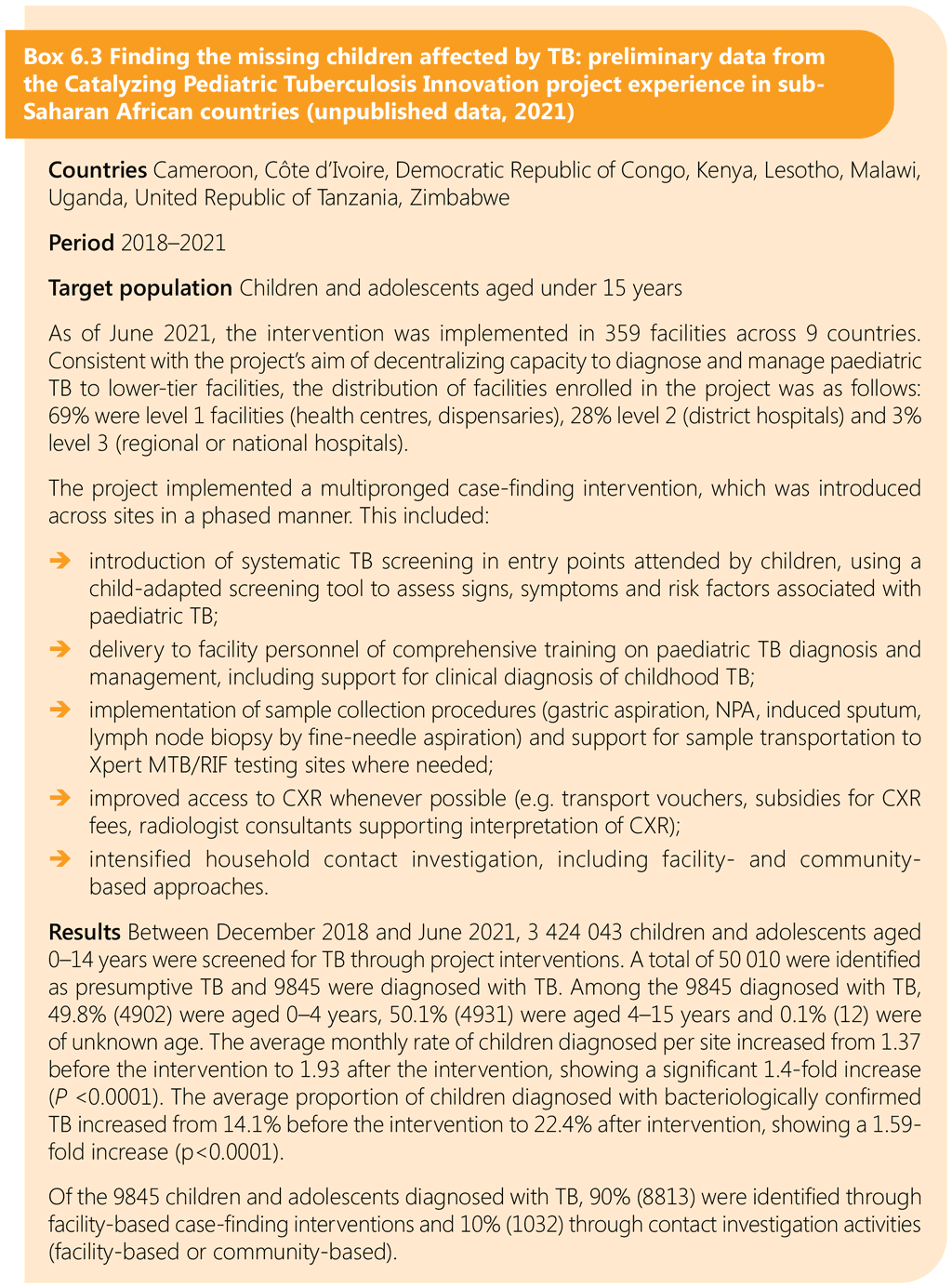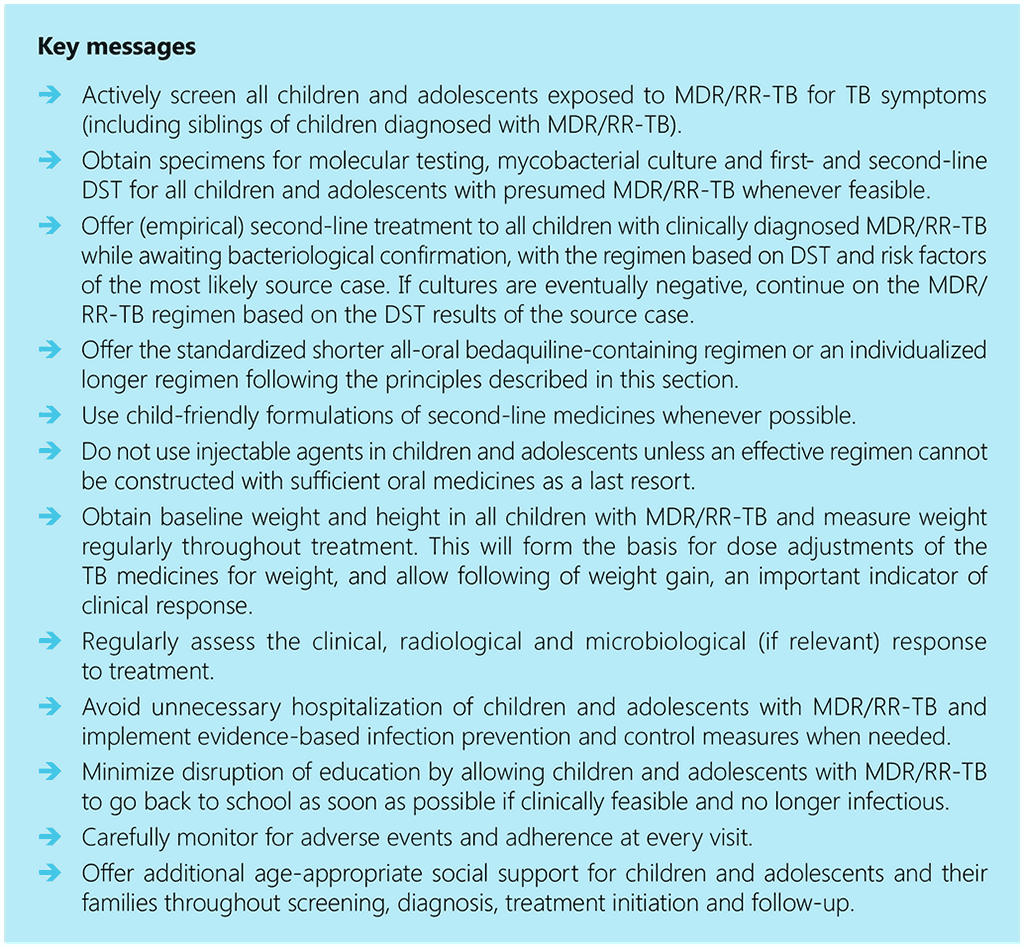Children and Adolescents
6.2.1.9. Socioeconomic impact of TB on children, adolescents and families
TB commonly affects people of lower socioeconomic status and exacerbates poverty and social deprivation through catastrophic costs25 and reduced household income. Most children with TB develop TB after contact with an adult family member with infectious PTB. A high number of TB notifications in children indicates an ongoing adult epidemic (170). TB in the family unit does not only result in transmission to children: it also poses a threat to household income and financial security.
6.2.1.8. Opportunities for integration of TB services into other services
Opportunities for integration of TB services at the health facility level exist in outpatient departments; nutrition, HIV, maternal and child health clinics (e.g. prevention of mother-to-child transmission, antenatal care, immunization clinics), general paediatric, adult TB and chest clinics; and inpatient departments. If resources are available, implementation of provider-initiated TB screening in relevant child health entry points and linkages to diagnosis or treatment may be considered by the NTP.
6.2.1.7. Resource requirements
Health system costs are likely to increase in initial phases of decentralizing services, but they are then expected to reduce over time. Initial investment costs may include costs related to infrastructure enhancement and capacity-building of health care providers and community engagement (See web annex 4). Recurring costs may include salaries, incentives, administrative costs, expanded information systems costs, and supervision and mentoring costs.
6.2.1.6. Access to diagnostic supplies and child-friendly formulations of TB medicines
Health care facilities that offer TB services should have access to supplies for sample collection such as nasogastric tubes, spatulas and specimen containers, and access to child-friendly formulations of TB medicines. Sample referral systems need to be established if access to mWRDs is not available on site (76).
6.2.1.5. Recording and reporting
Decentralization of health services requires decentralization of health information systems including capacity-building among staff responsible for data collection and analysis. The use of NTP recording tools (such as contact investigation, TPT and treatment registers) may need to be evaluated and enhanced, including through operational research.
6.2.1.4. Treatment support
Implementation of the recommendations related to treatment support should enable the provision of people-centred TB services. Treatment adherence interventions that may be offered for people on TB treatment may include material support (e.g. food, financial incentives, transport fees), psychological support, tracers such as home visits or digital health communication (e.g. SMS, telephone) and medicine monitoring (107). Interventions should be selected based on assessment of the individual’s needs and preferences as well as available resources.
6.2.1.3. Health workforce
Availability of a skilled workforce at the various health care levels is critical to provide high-quality TB services. The NTP should plan for capacity building of staff to undertake any new responsibilities, including task-shifting for functions such as TB screening, contact investigation, non-invasive methods of sample collection, use of treatment decision algorithms, and use of child-friendly formulations of TB medicines. This can be achieved via training, provision of equipment, supportive supervision and mentorship.
Pagination
- Previous page
- Page 7
- Next page
 Feedback
Feedback

